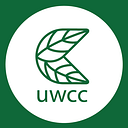Truth & Reconciliation
Written by: Jacqueline Omdara & Research by: Sophie Campbell
September 30th is the National Day for Truth & Reconciliation which was created on June 3, 2021. It is an opportunity to publicly remember and recognize the history and impact of residential schools. Residential Schools was a time when 150,000 First Nations, Metis, Inuit children were forced to schools between the 1870s-1997. There were more than 139 schools that were run by Catholic, Anglican, and United Churches with the help of financial support from the government. Children who were forced into these schools were forbidden to speak their native languages and were punished unless they converted to religions. The placement of these schools were deliberately far from home so that it was difficult to escape and difficult for families to visit. Recently, more than 1300 Indigenous children were found in unmarked graves on school sites, so far. Thousands more are expected to be found. These deaths were caused by tuberculosis, flu, diseases, neglect/starvation, and suicide. This reflects the horrendous treatment children went through.
Settler-Indigenous History
From 1871–1921, 11 Treaties were given to settlers to access the natural resources and land for settlements. In return, tools and money were supposed to be given to indigenous peoples but often were never given. In 1876, the Indian Act put Indigenous peoples under strict control, including forced habitation on reserves and forced removal of children to live at residential schools (i.e assimilation). This caused the rapid exploitation of resources which, in turn, impacted the climate. Indigenous peoples not only experienced a decline in food sources but they also experienced inhumane environments including polluted waterways and animals with contaminated bloodstreams.
From 2007 to 2015, the Truth & Reconciliation Commission (TRC) occurred where people had the opportunity to travel around Canada to listen to 6,500 witnesses of Residential Schools. The purpose was to educate the public about the history and legacy of the residential school system. There is still much reconciliation to be made however, below is a list of just some of what can be done now:
· Canadian Governments and the United Nations Declaration on the Rights of Indigenous People
· Royal Proclamation and Covenant of Reconciliation
· Settlement Agreement Parties and the United Nations Declaration on the Rights of Indigenous Peoples
· Equity for Aboriginal People in the Legal System
· Professional Development and Training for Public Servants
· Church Apologies and Reconciliation
· Education for Reconciliation
· Missing Children and Burial Information
· National Centre for Truth and Reconciliation
Showing Support
One of the main ways to support Indigenous peoples is to educate yourself. This could be through Truth & Reconciliation Commission reports or research about the history of Settler-Indigenous relations and conflicts. There are also many Indigenous journalists, businesses, artists, and authors to show support to. There are also proactive ways to help such as donating to Indigenous-led organizations (food, shelter, legal aid, education, etc) such as the Indian Residential School Survivors Society or the Orange Shirt Society. Some more include the First Nations Child and Family Caring Society, Legacy of Hope Foundation, and KUU-US Crisis Line Society. Nevertheless, there must be recognition that trauma can pass between generations and it may be very difficult for Indigenous people to speak on these events.
Indigenous Peoples & Sustainability
Despite what many may think, Indigenous managed lands have the highest concentration of wildlife. This can be largely contributed to the “take/use only what you need” mentality as well as “take only when there is plenty”. For example, only harvest a plant if you can see 2 more. Indigenous peoples are very careful and thoughtful of how their actions will impact the Earth. They do not clear cut plants/trees but take from a variety of places so that nature can more easily replenish itself. They also contribute to practices such as high crop diversity, rotational farming, and agroforestry.
References
Canadian Geographic. (2018, June 20). First nations. Indigenous Peoples Atlas of Canada. Retrieved September 26, 2021, from https://indigenouspeoplesatlasofcanada.ca/section/first-nations/.
Defence, N. (2021, July 20). Government of Canada. Canada.ca. Retrieved September 26, 2021, from https://www.canada.ca/en/department-national-defence/maple-leaf/defence/2021/07/federal-statutory-holiday-national-day-for-truth-and-reconciliation.html.
Giorgia Magni. Indigenous knowledge and implications for the sustainable development agenda. Wiley. DOI: 10.1111/ejed.12238
Government of Canada; Crown-Indigenous Relations and Northern Affairs Canada. (2021, June 11). Truth and Reconciliation commission of Canada. Government of Canada; Crown-Indigenous Relations and Northern Affairs Canada. Retrieved September 26, 2021, from https://rcaanc-cirnac.gc.ca/eng/1450124405592/1529106060525.
Guardian News and Media. (n.d.). ‘Cultural genocide’: The shameful history of Canada’s residential schools — mapped. The Guardian. Retrieved September 26, 2021, from https://www.theguardian.com/world/ng-interactive/2021/sep/06/canada-residential-schools-indigenous-children-cultural-genocide-map.
Heritage, C. (2021, June 8). Government of Canada. Canada.ca. Retrieved September 26, 2021, from https://www.canada.ca/en/services/culture/history-heritage/indigenous-history.html.
Lindores, S. (2021, September 2). What is national day for truth and reconciliation, and who gets the statutory holiday? CTVNews. Retrieved September 26, 2021, from https://www.ctvnews.ca/canada/what-is-national-day-for-truth-and-reconciliation-and-who-gets-the-statutory-holiday-1.5570906.
Reports. NCTR. (n.d.). Retrieved September 26, 2021, from https://nctr.ca/records/reports/.
Schuster, R., Germain, R. R., Bennett, J. R., Reo, N. J., & Arcese, P. (2019, July 22). Vertebrate biodiversity on indigenous-managed lands in Australia, Brazil, and Canada equals that in protected areas. Environmental Science & Policy. Retrieved September 26, 2021, from https://www.sciencedirect.com/science/article/abs/pii/S1462901119301042.
24th, : A. N. N. A. F. I. E. L. D. I. N. G.- S., 23rd, : P. K.- S., & 23rd, : J. F.- S. (n.d.). Here’s how you can be a genuine ally to indigenous communities in Canada. Elle Canada. Retrieved September 26, 2021, from https://www.ellecanada.com/culture/society/heres-how-you-can-be-a-genuine-ally-to-indigenous-communities-in-canada.
